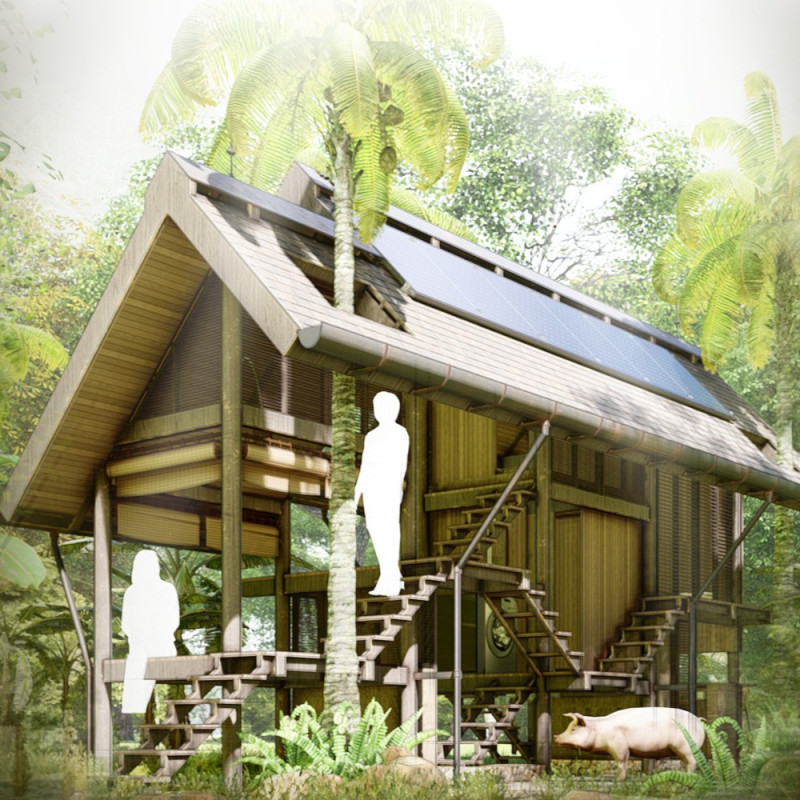5 key facts about this project
The project focused on the Mentawai tribe in the Mentawai Islands of West Sumatra, Indonesia, combines traditional cultural elements with modern design. It aims to create a living space that meets the needs of the younger generation while addressing the challenges posed by modernization. The design reconsiders the traditional Uma, promoting an idea of coexistence between architecture and nature while fostering community interaction.
Design Concept
The design introduces a contemporary take on the Uma, moving away from the traditional symmetrical roof to an asymmetrical form. This change helps the new dwelling stand apart from older models and reflects the values of the present day. By doing so, it honors the tribe’s heritage while supporting modern living needs.
Spatial Organization
The arrangement of spaces balances private areas for daily life with communal spaces for social interaction. Two residents can live comfortably alongside their guests, while special areas for community rituals and ceremonies are also included. A proposed amphitheater serves as a venue for gatherings, reinforcing the community's social cohesion. This layout maintains functionality without losing cultural importance.
Sustainability Features
Sustainability is a core aspect of the design. A circular water system utilizes rainwater as the primary source, with well water available when needed. The use of biodegradable soap made from local plants enables greywater recycling for irrigation. These practices reduce water waste and align with the sustainable living approach of the Mentawai people.
Energy Strategy
The energy plan includes photovoltaic panels and a radiant floor cooling system. The solar panels generate electricity to meet the dwelling's needs, promoting energy independence. Passive cooling is achieved through roof ventilation, which reduces the need for mechanical cooling. This approach creates a more comfortable indoor climate while minimizing energy consumption.
The design features an asymmetrical roof that signifies a shift toward a new period for the Mentawai tribe, maintaining a connection to their cultural identity while embracing the present.



















































